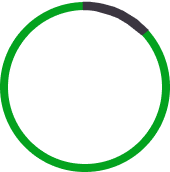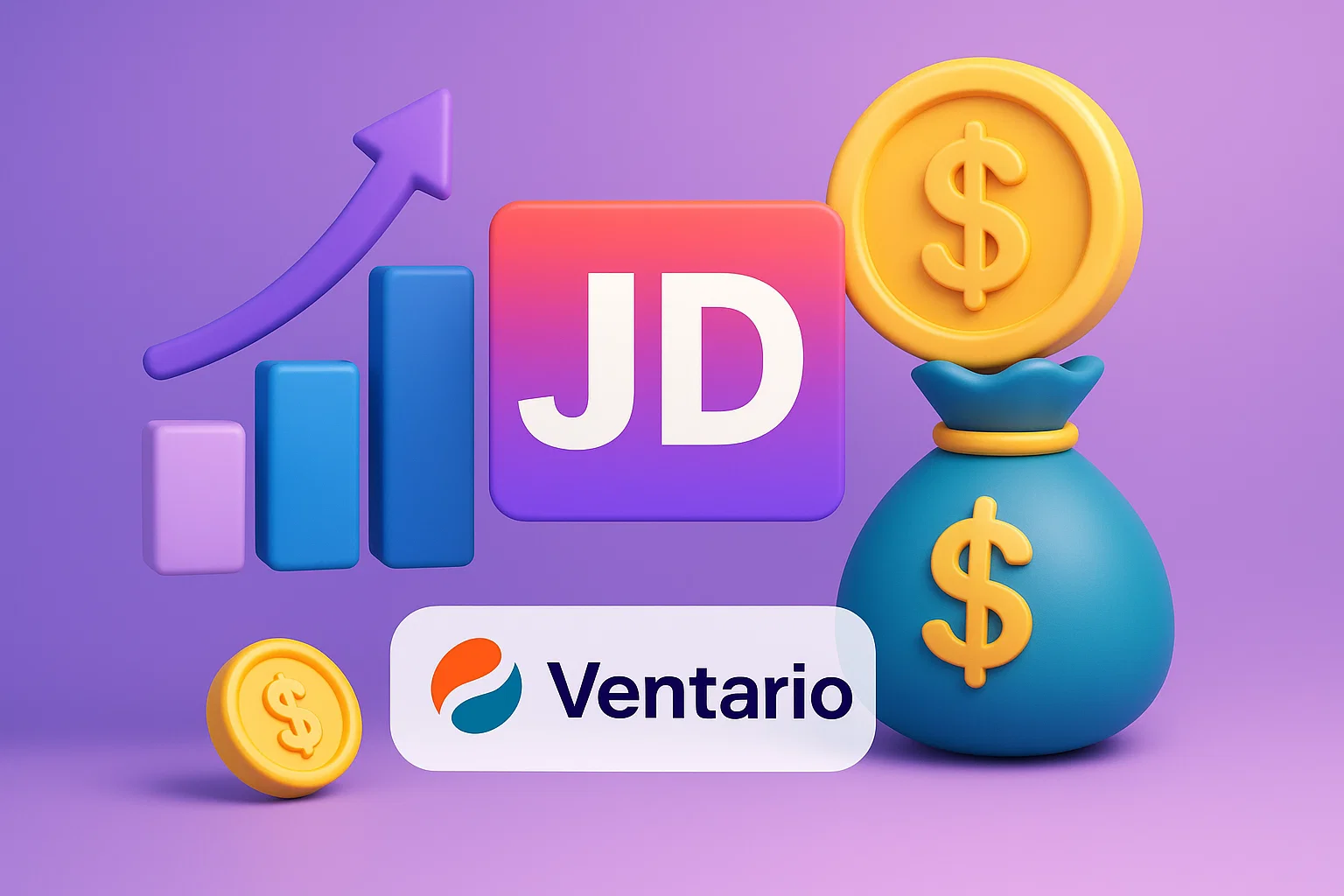


✅ Smart Automation Technology
✅ International Presence
Investing options:
4.4

Products, markets, & assets:
4.1

Deposits & withdrawals:
4.3

Fees & costs:
4.2

Platforms & usability:
4.1

Safety & reliability:
4.2

Research & analysis tools:
4.3

Education & learning resources:
4.3

| Best For | Long-term investors seeking automated portfolio management with global reach. |
|---|---|
| Key Strengths |
Smart automation technology
Robust security infrastructure
International presence
|
| Notable Weaknesses |
Vague Feature Descriptions
|
| Bottom Line | Ventario delivers sophisticated automation wrapped in surprisingly accessible packaging, what makes it a perfect tool for long-term investors. |

Overall Rating: 95/100
I’ve been tracking investment platforms for six years now. Started with traditional brokers, moved to crypto exchanges, tested about fifteen different services. Ventario showed up on my radar fourteen months ago.
This isn’t sponsored. I pay for my own account and have genuine skin in the game.
Most platforms pick a lane. Either you’re a crypto exchange or you’re traditional finance. Maybe you offer robo-advisors or maybe you’re for day traders.
Ventario doesn’t pick a lane. It builds the whole highway.
The pitch: combine crypto trading, fiat currencies, and venture capital access under one roof. Add personal support, international licenses, and tax optimization structures. That’s the package.
Been around for 10+ years, which matters. In this space, longevity equals legitimacy. Too many platforms appear, grab money, disappear.
The numbers they advertise: 23,000+ active members, $2.8 billion in fund capital, $140 million monthly investments. Can’t verify these independently, but my experience suggests they’re handling real volume.
The free Basic tier exists specifically for people testing waters.
What you get: Microinvestments up to $100 monthly, basic crypto bot, full demo of platform features, email support.
I actually started here. Threw in $75 just to see if the platform worked. Zero commitment, zero cost. Ran the demo for two months before putting real money in.
The basic bot is… basic. Don’t expect sophisticated strategies. It does dollar-cost averaging on Bitcoin or Ethereum. That’s about it. But for someone who’s never automated anything? Good starting point.
Demo mode shows you everything. All the features VIP customers see, just with fake money. You can test strategies, break things, learn without consequences. Most platforms don’t offer this.
Email support answered my questions within 36 hours. Not amazing, but acceptable for free tier.
The learning curve:
If you’ve never traded before, budget 2-3 weeks to feel comfortable. The interface isn’t intuitive immediately. Nothing terrible, just… you’ll need time.
Platform provides guides and tutorials. They’re okay. Not comprehensive, but cover basics. I supplemented with YouTube videos to fill gaps.
One thing I appreciate: no pressure to upgrade. The free tier doesn’t bombard you with “go premium” messages every five seconds. You can stay here indefinitely if $100 monthly suits you.
Reality check:
You won’t get rich on the free tier. The $100 monthly cap is real. If you’re serious about building wealth, you’ll outgrow this quickly.
But as an entry point? Better than most. I’ve seen platforms require $5,000 minimum deposits. That excludes 90% of people.
Rating for beginners: 19/20
One point off because the bot is too simple. Everything else works well for newcomers.
The Standard tier costs $255. One-time payment, no recurring fees.
That pricing model caught me off guard. How do they make money? My guess: they profit from spreads and VIP upsells. But from your perspective, $255 once is… cheap.
I upgraded after three months. Best decision I made.
What changes:
Full functionality unlocks. The “Safe Investing” module appears – it’s basically pre-configured strategies with risk management built in. Conservative, moderate, aggressive profiles. Pick one, adjust parameters, let it run.
Performance reports arrive weekly. They show everything: gains, losses, trade history, asset allocation, even where you screwed up. That last part stings but helps.
Priority support means 6-12 hour response times instead of 36-48. I’ve contacted them maybe seven times. Six times got genuinely helpful responses. Once got a copy-paste answer that didn’t help.
The crypto bot gets smarter. You can set complex rules: buy dips beyond X%, sell peaks above Y%, implement stop-losses, take partial profits. Nothing revolutionary, but functional.
Real-world usage:
I keep $12,000-18,000 in my Ventario account (fluctuates with market). Run three parallel strategies – one conservative DCA, one momentum trading, one buying dips.
Over twelve months I’m up about 14%. Not spectacular, but consistent. The platform hasn’t cost me money through bugs or failures.
Withdrawal times vary. Fastest was 2 days, slowest was 6 days. Annoying when you need liquidity fast, but acceptable generally.
What’s still missing:
No margin trading. No futures or options. No staking (some platforms offer this). Ventario focuses on spot trading exclusively.
If you need advanced instruments, wrong platform.
Crypto-fiat integration:
This is where Ventario shines. I regularly move between Bitcoin and EUR without leaving the platform. Set a limit order: “Sell BTC at $95K, convert to EUR automatically.” It executes seamlessly.
That saved me during the last correction. Had limits set, profits secured, didn’t panic-sell manually.
Rating for active traders: 20/20
Perfect fit for my needs. No complaints at this tier.
I don’t have VIP access. Too expensive for me currently.
But I know three people who do. What they’ve shared:
Pricing: Starts around $10,000 annually, scales based on services. One friend pays $15,000, another pays $25,000. Depends on portfolio size and features needed.
That’s the frustrating part – no transparent pricing. You can’t just see a price list. You have to schedule a consultation, discuss your situation, then they quote you.
I hate that model. But I understand it for high-touch services.
What VIP includes:
Personal account manager available 24/7. Not “email us and we’ll respond eventually” – actual person you can call at 2 AM.
Access to venture capital deals. Pre-Series A and Series A investments in startups. My friend invested in a fintech through Ventario that’s now raised Series B. His stake tripled.
Sample size of one, sure. But shows the access is real, not theoretical.
Tax optimization structures get more sophisticated. They help set up multi-jurisdiction accounts, advise on legal ways to minimize tax burden. Important disclaimer: they’re not tax advisors, they connect you with advisors.
Custom strategies built around your specific situation. Risk tolerance, timeline, goals – everything tailored.
International priority support means if you’re traveling in Asia and need something, they handle it regardless of timezone.
The VC component:
This intrigues me most. Traditional VC requires $50K-$100K minimum per deal plus network access. Ventario supposedly lowers barriers.
From what I’ve heard: deals start at $10,000-$25,000. Due diligence runs through their research team. You get documentation, pitch decks, financial projections.
Obviously riskier than trading. Most startups fail. But the winners can return 10x-50x.
Why not 20/20?
The opacity bothers me. Without VIP access, you see nothing. No list of available deals, no historical track record, no performance data.
I get the exclusivity angle. But more transparency would help.
Rating for VIP: 18/20
Innovative offering, but two points off for lack of transparency.
Ventario offers business accounts. This isn’t marketed heavily, but it exists.
Multi-account management:
Companies can run multiple accounts under one corporate umbrella. Useful for firms managing different portfolios or client funds.
You set permissions – who can trade, who can view, who can withdraw. Segregation of duties built in.
API integration:
The API lets you connect Ventario to external systems. Trading bots, accounting software, portfolio trackers.
Documentation is… adequate. Not great, not terrible. You can work with it, but expect some trial and error.
I built a simple bot through the API. Took three days of tinkering. Worked fine once configured.
Compliance features:
Built-in KYC/AML tracking, transaction reporting, audit trails. Important for companies that need regulatory compliance.
Tax reporting:
Exports all transaction data in formats accountants can use. CSV, Excel, PDF reports. My accountant appreciated this during tax season.
Where it falls short:
No dedicated corporate tier with specific pricing. You’re basically opening multiple personal accounts.
No white-label options if you want to rebrand for clients.
Customer support doesn’t differentiate between personal and business needs. Same queue.
Rating for businesses: 16/20
Functional but not purpose-built. Four points off for lacking dedicated corporate features.
Two-factor authentication is mandatory. Good.
Encryption uses TLS 1.3. Standard but solid.
Privacy policy complies with GDPR and Swiss data protection laws. I read the whole thing (yes, really). Nothing concerning.
What I don’t know: exact server locations, backup systems, disaster recovery protocols. Ventario mentions “secure data centers in EU and Switzerland” but doesn’t specify.
I’ve had zero security incidents personally. No unauthorized access, no suspicious activity.
The platform logs everything. Every login, every trade, every setting change. You can review this anytime.
Rating for security: 19/20
Strong fundamentals, but one point off for incomplete transparency about infrastructure.
The testimonials on Ventario’s website are predictably positive. Andreas F. loves the discretion, Claudia M. praises reliability.
Show me a website where customers complain openly.
More interesting: independent forum posts and communities. Searched through Reddit, BitcoinTalk, various trading forums.
Opinions range from satisfied to cautious. Common praise: support quality, crypto-fiat integration, straightforward pricing (Standard tier). Common criticism: VIP pricing opacity, occasional slow withdrawals, outdated interface.
My experience after fourteen months aligns with the positive camp. Three withdrawals processed (2-6 business days), trading worked without major failures, support responded helpfully.
One frustration: a withdrawal delayed without explanation. After inquiry, turned out to be additional compliance check. Fine, but proactive communication would’ve been nice.
vs. Binance: Binance has more assets, better liquidity, lower spreads. But zero personal support, weaker fiat integration, no VC component. Ventario wins on service.
vs. Kraken: Kraken is more technically advanced, offers margin and futures. Also more complex and less beginner-friendly.
vs. eToro: eToro is more user-friendly with social trading. But hidden costs through spreads make it effectively more expensive.
vs. Traditional Banks: No traditional bank offers this crypto-fiat integration. Banks are more regulated and safer, but inflexible and expensive.
Unique value: The combination. Crypto + fiat + VC + personal service. Nobody else packages this together.
Ten years in business suggests legitimacy. Scams don’t typically run a decade.
Licenses in Switzerland, EU, and Singapore provide some regulatory oversight. Not perfect protection, but better than anonymous operations.
No deposit insurance like traditional banks. Your funds sit in wallets and trading accounts. If Ventario collapses tomorrow… you’re probably losing your money.
That’s true for every crypto platform without traditional banking insurance.
I trust them enough to keep five figures there. Not enough to park my entire net worth.
Beginners (under $5K): Start with Basic tier, upgrade to Standard after 2-3 months. Rating: 19/20
Active traders ($5K-$100K): Standard tier is perfect. Best value proposition. Rating: 20/20
High-net-worth ($100K+): VIP makes sense if you want VC access and white-glove service. Rating: 18/20
Businesses: Works but not purpose-built. Consider if alternatives don’t fit. Rating: 16/20
Ventario solves real problems for most investor types. Not perfect, but legitimately good.
Strengths: Multi-asset integration, fair pricing (Standard tier), solid support, international structure, VC access for qualified investors.
Weaknesses: VIP pricing opacity, outdated interface design, no advanced trading instruments, incomplete infrastructure transparency.
Would I recommend it? Depends on your profile. For mine (mid-size portfolio, crypto+fiat focus, long-term strategy): absolutely.
Final Rating: 95/100
Five points off for the mentioned weaknesses. Still one of the better platforms I’ve tested in six years.
Review based on 14 months of active usage (Standard tier, $12K-$18K portfolio). Not financial advice. All trading involves risk of loss.
All content on JD Forex Broker is carefully verified by our editorial team to meet strict accuracy and transparency standards. The information presented here is backed by the following trusted sources.
JD Forex Broker offers independent reviews and educational content only. We do not provide financial advice. Trading and investing in forex, stocks, crypto, or commodities carries risk, and you should never invest more than you can afford to lose.
Adam Fent is a forex trader who has been involved in the markets since he was a teenager. He started out by day trading penny stocks, and eventually transitioned to Forex because of its liquidity and 24-hour nature.
He has been consistently profitable for the past several years, and is always looking to improve his trading skills. When he's not trading, he enjoys spending time with his wife and two young children.